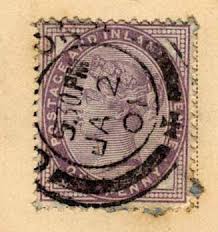 I've been Civil War reenacting for some time now. In fact, I'm about to begin my seventh season on the field. It's strange to believe that it's been that long; it seems like just yesterday I was in Florida, reading The Killer Angels and trying to convince my dad to do it. In all that time, however, I have never done one thing that I've really, really wanted to try: actually shoot a Minié ball from a Civil War era rifle.
I've been Civil War reenacting for some time now. In fact, I'm about to begin my seventh season on the field. It's strange to believe that it's been that long; it seems like just yesterday I was in Florida, reading The Killer Angels and trying to convince my dad to do it. In all that time, however, I have never done one thing that I've really, really wanted to try: actually shoot a Minié ball from a Civil War era rifle.That is, I never had done it.
This weekend was the annual Spring Drill, where we all come out of our holes and remember how to march. We had about 12-15 guys on Saturday, which was a great turnout. My group is the 44th Tennessee, Company K, though we have a sister company on the Yankee side that we like to fall in with--the 49th Indiana, Company F. This year's drill was held at the 49th's Captain's home in Brownsburg, Indiana. For most of the day we were separate, though we spent some time combined on bayonet drill (more on that in a future post) and did a squad competition to see who remembered commands the best. Near the end of the day, one of the guys from the 49th said that they'd be doing some live firing and that if anyone wanted to try it out, he'd be happy to let them use his gun(s). How, I ask, could I resist that kind of opportunity?
Some people set up targets and hay bales about 25 yards away from where we'd be shooting from. I watched for a bit before gathering the guts to ask if I could go next. The guy was really nice and asked if I'd like to shoot both guns. "Both?" I inquired.
Apparently, he owned not only an 1853 Enfield rifle (.577 caliber, the second most common gun in the Civil War, behind the 1861 Springfield, which I own; see photo below for the Enfield):

But also an 1842 Springfield (probably the prettiest gun of the war, and the last .69 caliber rifle ever made--see below):

The Enfield shot your typical Minié ball. It is easier to aim, since there are two sights--one right past the hammer and one at the end of the barrel. I hit the bales pretty easily (by then, the targets had been blown away). It also has a relatively minor kick.
The 1842 Springfield, however, was a knockout. It is smoothbore, so not rifled, which means that it becomes very inaccurate very quickly. Additionally, it uses the 'buck and ball' round--one .69 caliber lead ball with three .40 caliber 'bucks', or smaller balls. The effect is similar to that of a modern shotgun: deadly at close range, though increasingly useless further away.
Using these weapons, you suddenly realize how horrifying the experience of a soldier must really have been. The shots have more of a delay than modern guns, meaning that there is a noticeable time lapse between seeing the smoke come out of the barrel and seeing the effects of the bullet. To imagine a literal torrent of lead is awful. It turned out not only to be a fun time shooting cool old weapons. Instead, it led to a realization and a greater respect on my part for what a man in the Civil War had to expect. After all, that is one of the main reasons to be a reenactor; you want to be able to vividly relive at least a bit of what your ancestors went through, and, ultimately, you want the public today to undertand what kind of pains and sacrifices were made almost 150 years ago.
We're coming up very soon to an important anniversary. On April 9, we commemorate the 'traditional' end of the war, with General Lee's surrender to General Grant at Appomattox. Soon after, on April 15, we remember the first--and probably most profound--assassination of a president in U.S. history. It's good to take some time to reflect on how important that era was to what we are today.













